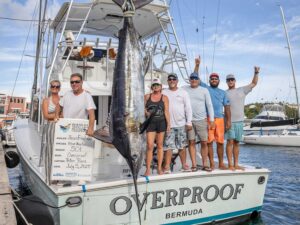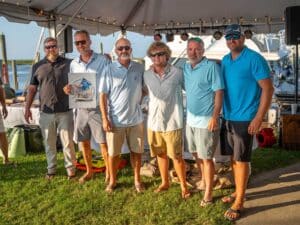
TBF-Panama
A report released today by The Billfish Foundation (TBF) reveals that sport fishing has been a major factor in attracting tourists to Panama providing a valuable fishing-based economic lift to the country. In 2011 (most recent data), 86,250 visitors fished in Panama. Those anglers and the rest of their travel companions spent $97 million on charter boats, fuel, food, lodging, and other related expenses. The number of anglers visiting Panama has doubled from 2001 to 2011 and the surge could only be the beginning, provided that fishing remains great and consumers are made aware of it. For every U.S. angler that has visited the country, eight more are interested in Panama as a fishing destination. If each interested angler was enticed into visiting, it could translate into an additional $776 million for the Panamanian economy. The study, entitled “Sportfishing in Panama: A Natural Economic Gold Mine,” was conducted by Southwick Associates with critical on-the-ground support from Vista Group-Panama, OCEARCH and TBF Scientist Dr. Russell Nelson, and was funded by Panamanian government agency SENACYT.
“This boom in tourism in Panama is really no surprise. Panama’s wonderful climate, natural beauty, and amazing beaches alone are major attractions, but one in four tourists that fished visited Panama JUST to fish,” says Ellen Peel, the president of TBF. “It is paramount, though, that governmental agencies continue to focus on implementing responsible management and conservation measures for marine fisheries and continue to restrain foreign purse seine and local longline vessels for the benefit of billfish and all species. If managed correctly, Panama’s sport-fishing sector will become an even bigger cash-cow for Panama’s tourism economy.”
The survey asked U.S. anglers why they choose to fish in some countries but not others. Beyond the excellent fishing, Panama scored high among surveyed anglers regarding the reasonable cost of travel, safety, and availability of quality charter boats. In fact, 87 percent of the anglers surveyed were ‘satisfied’ or “very satisfied” with their trips. This bodes extremely well for Panama tourism because 68.5 percent of people choose a vacation destination based on friends or family recommendations. Because people leaving Panama have such a high rate of satisfaction, word-of-mouth between friends and family will drive even more people to the country.
“For every 10 sport-fishing visitors to Panama, another Panamanian job is supported,” Peel says. “But to continue to add to these jobs, Panama needs to maintain top-notch fishing, which requires an abundance of fish in the water that comes from good management and strong, well-enforced fisheries regulations. Anglers reported they favor fishing destinations that tightly and effectively control commercial and recreational harvests. Panama needs to communicate that they are on board with these tourism-driving factors.” Ms. Peel went on to add, “This study emphasizes that, if Panama wants to grow sport-fishing tourism, improvements to Panama’s infrastructure and services must be made based on fishery science and strong economic and conservation policies. By looking at the experience in other countries, poorly planned and managed fisheries will lead to less employment, not more.”
Sport-fishing tourism annually provides Panama with:
• $97 million new dollars via spending by visiting anglers
• $170.4 million in total retail and business-to-business sales within Panama
• 9,503 Panamanian jobs
• An increase in Gross Domestic Product of US $48.4 million
Click here to download a PDF from the TBF website with the full results of the survey.







